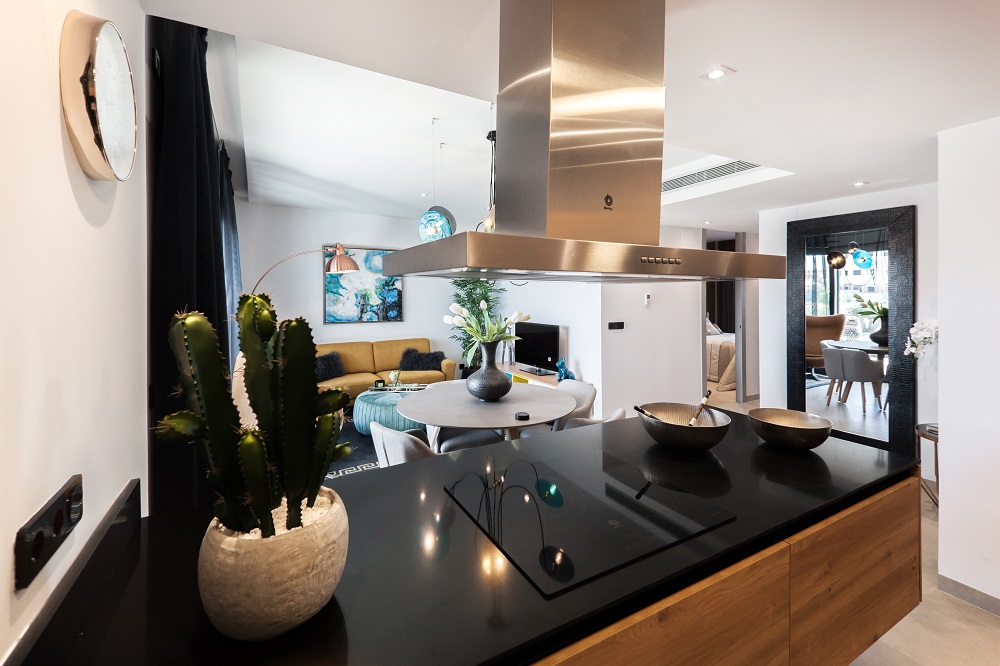If you regularly cook at home, you already know that having a smoky kitchen is often part of the experience. Whether it’s a result of frying certain foods or accidentally burning your cooking, smoke creates a strong and unpleasant odor that can spread through the rest of your home. Additionally, it degrades indoor air quality and can potentially cause respiratory distress in your family.
From your cooking methods to the ingredients that you use, there are various reasons why smoke occurs during cooking. Still, there are ways to keep your home smoke-free even when you need to do some serious deep-frying. With that in mind, here’s how to reduce smoke and maintain clean and healthy air inside your home.
Ensure Proper Ventilation
Ventilation is one of the first things you need to prioritize when cooking. Frying foods in oil and cooking fatty pieces of meat tend to produce lots of smoke, so you need to make sure that your kitchen has adequate ventilation for redirecting smoke and replacing the air. You’ll also have a much easier time cooking, as smoke can obstruct your vision and cause difficulty in breathing.
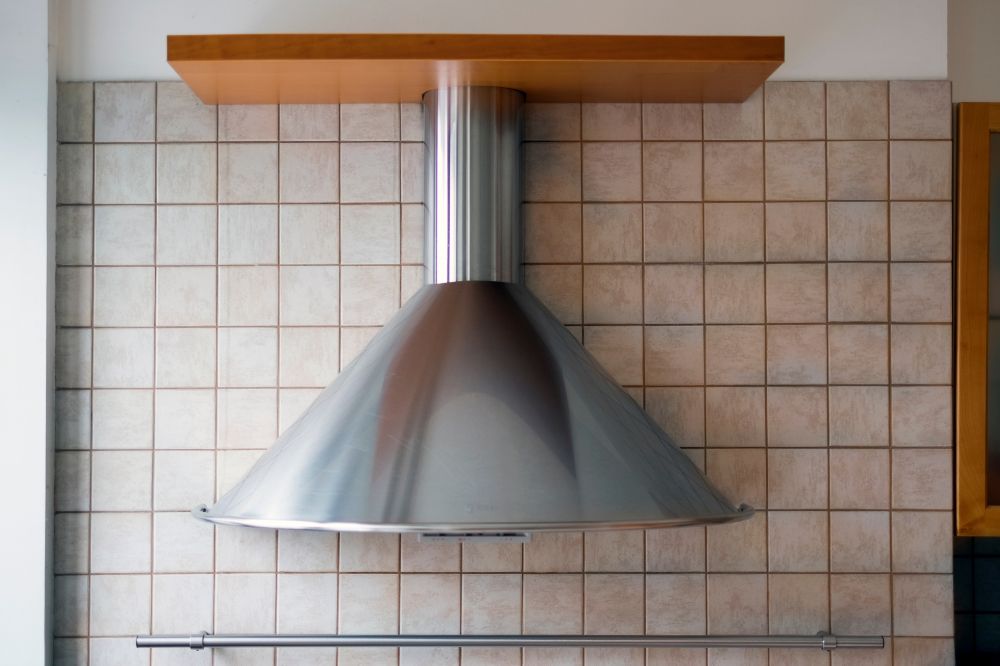
If you haven’t done so yet, invest in appliances that help eliminate cooking smoke. You can explore options on the internet and buy range hood online, preferably one that can handle thick smoke from stovetops. Another option that is multipurpose is buying an over the range microwave. It’ll free up precious counter space and is a good way to consolidate your appliances. Just like any other appliance there’s many sizes and styles to choose from.
Range hoods offer several key benefits for your kitchen and overall home environment. Firstly, they help to improve air quality by efficiently venting out smoke, cooking odors, and airborne grease particles, ensuring a fresher and more comfortable atmosphere. Secondly, they protect your kitchen surfaces and cabinetry from the buildup of sticky residue and grease, reducing the need for frequent cleaning and maintenance. Additionally, range hoods can enhance safety by removing potentially harmful fumes and pollutants produced during cooking. Overall, the installation of a range hood not only contributes to a healthier and cleaner kitchen but also adds value to your home by improving its functionality and aesthetics. To find out all the benefits of having a range hood in your kitchen refer to this ModernCopper’s guide.
Alternatively, if your place permits it, you could consider installing an exhaust fan or simply opening the doors and windows to let the air out while you cook. Placing a fan in the window has the same effect as having an exhaust fan installed without the added costs.
If leaving the doors open doesn’t sound like a good idea, go outside. In some cultures, it’s not uncommon to fry food outside. Everything that you’d want to fry inside can be done on a decent-sized grill.
Use A Splatter Screen
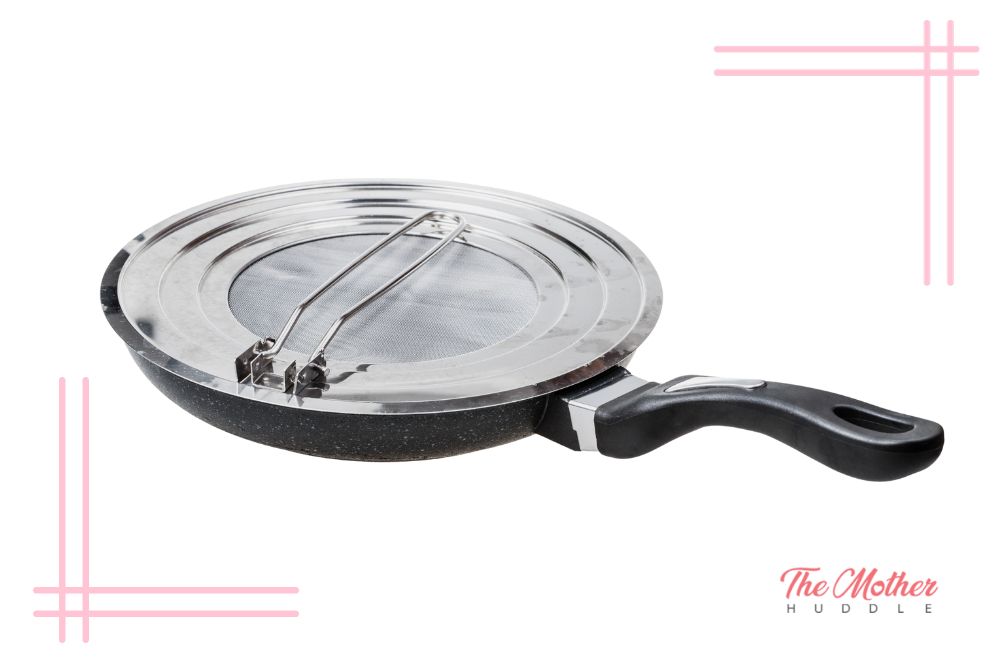
Most people don’t want another thing to be shoved into their kitchen cabinets, but splatter screens are pretty useful and a good quality splatter screen is cheap. For under $30 it’ll contain splatter messes and absorb unwanted cooking odor before they’re released throughout your house. These like frying pans come in different sizes so shop wisely. We recommend starting off just buying one for your favorite pan.
Turn On Your Air Filter
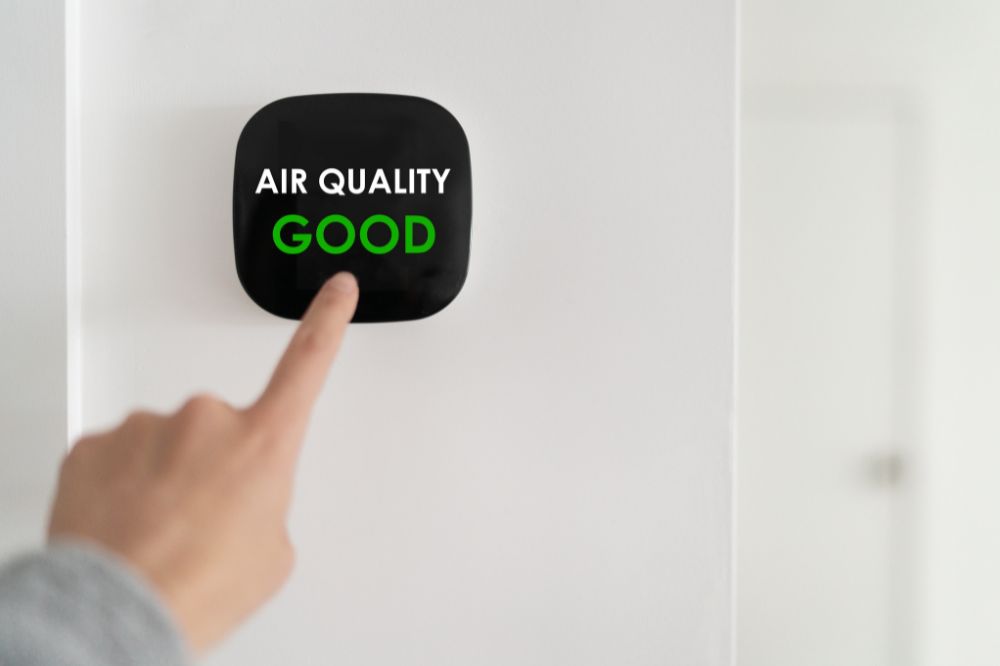
Did you know that your air filter as long as it’s HEPA compliant can actually help clean up your air? Many people with asthma or other lung or cardiovascular ailments and even those with pets already have an air purifier in common areas of their home. Temporarily moving it closer to the kitchen paired with other ways to ventilate your kitchen can greatly increase air quality.
Mind Your Smoke Points
Cooking oils are often the cause of the unsavory smoke you experience while cooking. However, this doesn’t mean that you should ban this ingredient from your kitchen. Actually it’s impossible to. Cooking oil can actually be a healthy source of fat when used in moderation.
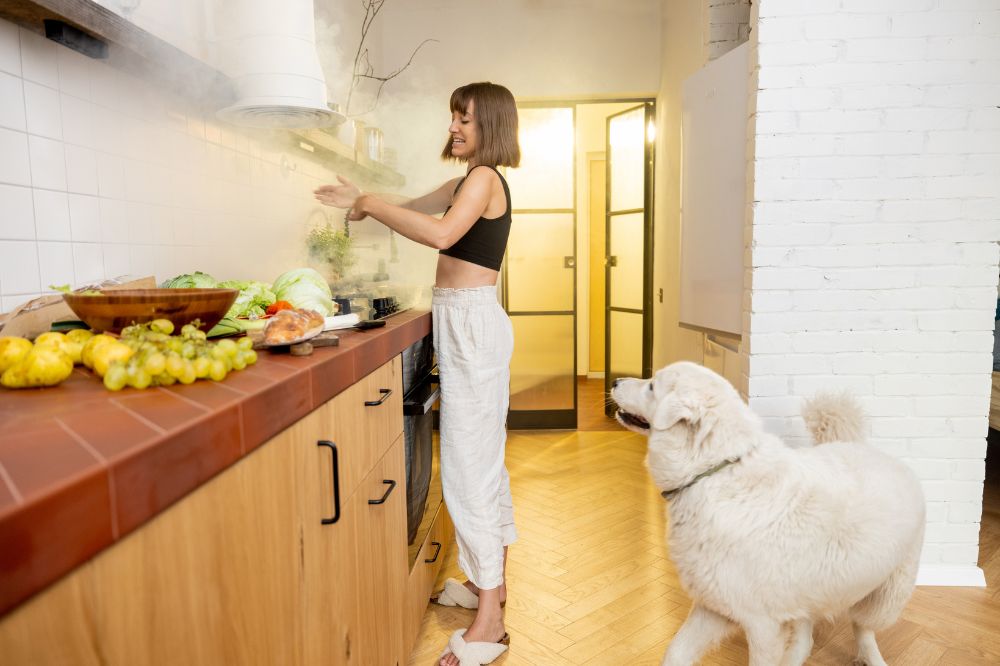
Did you know that cooking oils have varying levels of smoke points? This is the temperature at which oil or fat starts to smoke until it burns. Making sure that you use the right type of oil for what you’re cooking can reduce the amount of smoke that is produced when it is heated.
As a general rule, you need to match your oil with the cooking method you intend to use. When deep-frying, it’s best to use oils with a high smoke point, such as avocado, sunflower, corn, canola, sesame, and peanut (all above 400 degrees Fahrenheit or 204 degrees Celsius). Similarly, you should reserve oils with a lower smoke point like olive, flaxseed, or pumpkin seed oil (all at or below 225 degrees Fahrenheit or 107 Celsius) for colder dishes like salads or for brief heating such as sautés.
Avoid Overheating
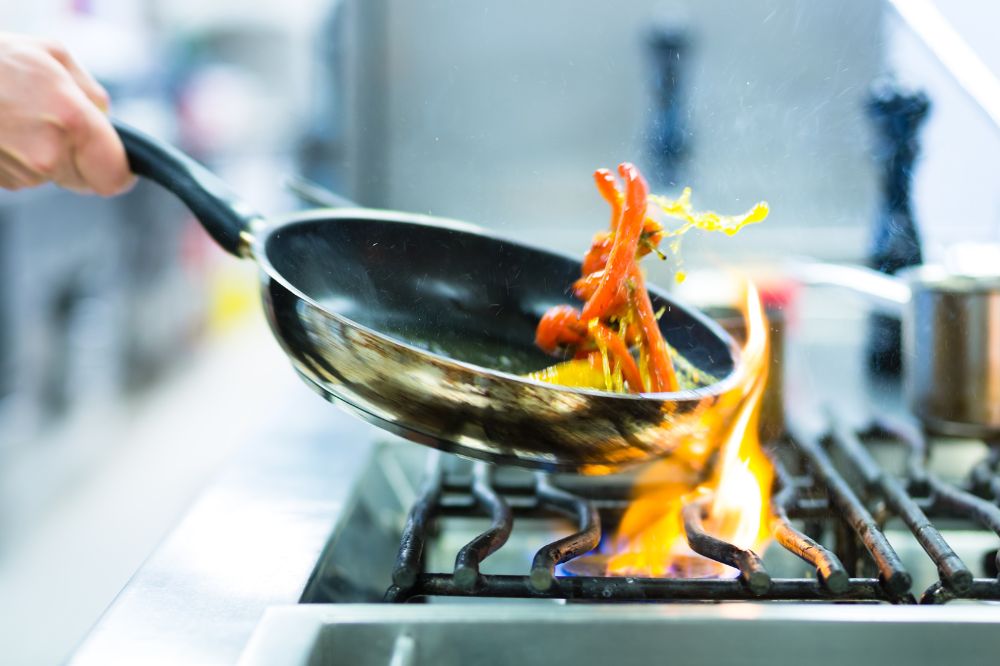
Keeping the temperature too high while cooking can cause large amounts of smoke and burnt food. To prevent this from happening, make sure to avoid overcooking food and constantly monitor the heat. Generally, it’s best to cook between medium and medium-high heat to avoid producing smoke and burning food. It might also be a good idea to cook with a timer and always follow cooking instructions to prevent overheating.
Prepare Your Cookware and Appliances
Some types of cookware and appliances produce less smoke than others, which makes them ideal for avoiding a smoky kitchen. Non-stick frying pans, for example, eliminate the need for excess oil, which then prevents the production of smoke. Using a lid for skillets, pots, and pans is also advisable since lids prevent smoke and steam from escaping. And since the lid traps the heat, food will cook faster without having to increase the temperature.
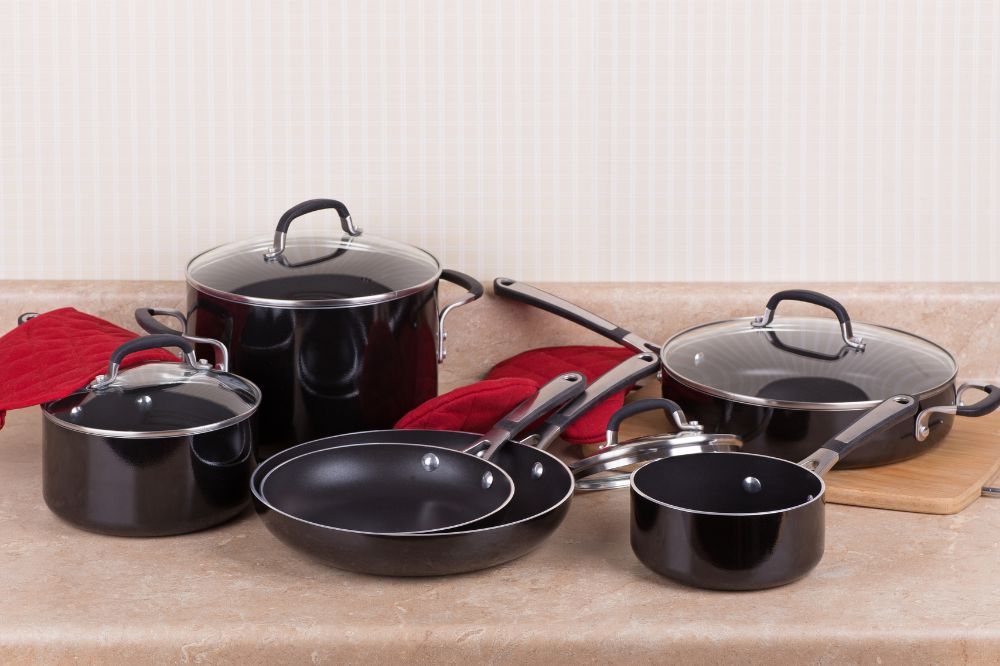
If you’re using regular stainless steel frying pans at home, heat up your pan first before putting anything in it. Doing so will prevent your food from sticking or burning so quickly. This will take a little bit of getting used to if you’ve never used stainless steel before.
If you’re using cookware such as cast iron pans or woks, you should consider seasoning them to create a layer that’s similar to non-stick pans. Creating that non-stick surface keeps the pan from rusting and encourages polymerization—a process in which fat is heated at a high temperature until it forms a hard surface on the pan that serves as a protective coating.
As a rule of thumb, you should season your cookware with oils that have a higher smoke point than the temperature you intend to cook at. If you absolutely must use low smoke-point oils, make sure that you keep cooling the pan to mitigate extra heat. Some experts also suggest adding water to the pan before grilling high-fat ingredients to cool it down.
Consider Other Cooking Methods
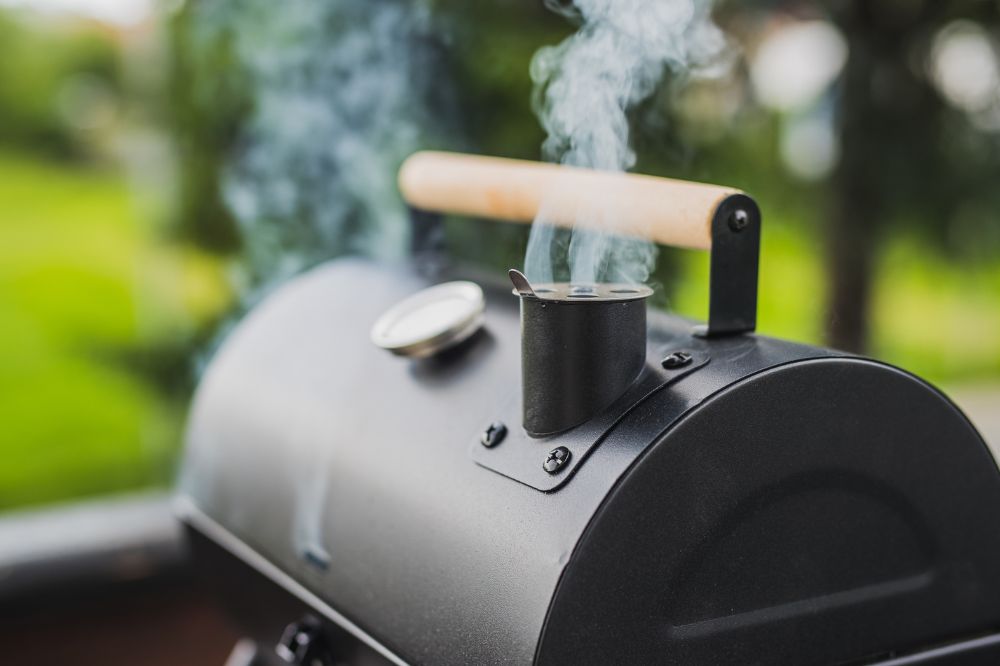
In general, grilling and frying food are more likely to result in kitchen smoke compared to other cooking methods. When possible, consider other methods of cooking. Boiling, steaming, and baking or grilling in your outdoor kitchen don’t produce smoke as a normal part of the cooking process, and these techniques are generally regarded as better for your health. If grilling and frying can’t be avoided, it’s best to cook outdoors so that the smoke can easily disperse and won’t collect inside your home.
Keep Your Equipment Clean
Apart from being a good hygienic practice, cleaning your kitchen, cookware, appliances, and other cooking surfaces after use will help prevent excess smoke the next time you need to cook. Food residue and gunk could build up and get stuck in your cookware and appliances, which can cause further smoking when exposed to high heat.
With this in mind, you may want to check your appliance manual to know how to properly clean kitchen equipment and appliances. When cleaning cookware such as pans, make sure to use dish brushes or a non-abrasive sponge to thoroughly remove debris without damaging the coating. Additionally, it would be ideal to regularly check your appliances and invest in their maintenance to prevent them from breaking down and becoming a fire hazard.
Final Word: Pay Attention While Cooking
At its core, cooking is a methodical process that requires careful attention and mindfulness. Hazards pervade the kitchen no matter what you intend to cook, whether it’s fried noodles or sirloin steak. Smoke is one such pervasive hazard that can have a negative effect on your home furnishings as well as your health. By being more mindful of how you cook and what you use for cooking, you can ensure a pleasant cooking environment and an overall better-smelling kitchen.

